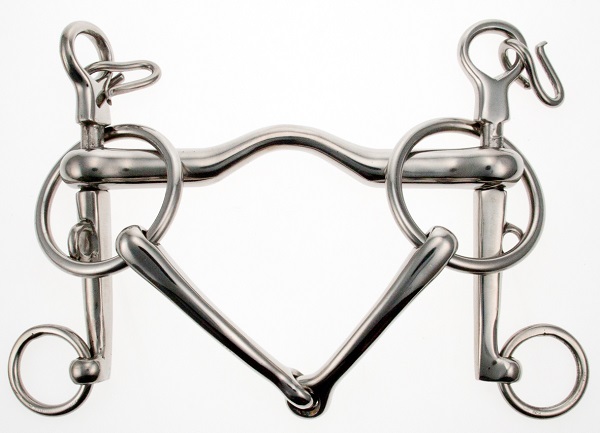Posted: 8th June 2020 | Back to news feed

Bitting experts, Abbey England, make thousands of bits in their UK foundry every year. Designed and produced by highly skilled craftsmen, every bit is individually handmade and can be customised to suit your requirements.
The possibilities are endless, even for traditional bits, as they can be lightweight, normal weight or made with a variety of mouth and cheek pieces.
In this article, Richard Brown of Abbey Bits tackles some common bitting problems.
When faced with any bitting problem you must look at the horse as a whole. This will include checking his teeth, back, saddle and any other factors which may be affecting him such as the rider’s ability and his level of training. Once you have eliminated all other possible causes of a bitting problem, you can then turn your attention to the actual bit.
Q, “I’m confused about double bridles. I have always been told that they
should never be used to mask schooling problems and that the horse should be able to work just as well in a snaffle bit. In which case, why do we need them for dressage?”
Richard says: “I think in our effort to bit our horses better we may have lost the reason behind choosing to put our horses in to a double bridle. It is to get the perfect blend of signals from two completely different bits.

The Bradoon part of the double has only two really clear signals to the horse mainly because it is jointed it gives the clearest turning signal and a small lift upwards. The Weymouth is the bit that gives the horse the clearest and least restrictive signals, firstly if it has a decent port to allow some tongue room it encourages the horse to reach forward into the bridle. If the chain is set correctly, as the cheek of the Weymouth turns you should get a perfect balance of three pressures, the mouthpiece rotates applying downward mouth pressure, then you get downward pressure on the poll and then the chain moves against the jaw as the cheek of the bit reaches 45 degrees stopping the mouth and poll pressure from dominating by balancing the bit giving equal pressure in the mouth on the jaw and the poll, which gives you your degree of head tilt and your brakes and way of helping to transfer weight.”
Q, “My horse leans on his snaffle with a lozenge. What's the next best
alternative, without having to resort to a snaffle with a nutcracker action?”
Richard says: “You might try several things to encourage him to soften and lift a little. I am assuming you are in a Loose Ring Round Lozenge Snaffle, try an Eggbutt Flat Lozenge Snaffle which is very slim with a forward curve and a small flat lozenge with neat joints to encourage him out to the bit but discourage him from leaning.

The Eggbutt cheek will make your signals slicker and easier for him to respond to and the flat lozenge will not be as easy to rest on. If that does not work try a Mullen Forward Curve Snaffle either on a Loose Ring or an Eggbutt Cheek. The slim 12mm Mullen with a deep curve allows lots of jaw and tongue room behind the bit but discourages leaning and completely takes the pinch out of the mouthpiece, which might be the reason he is leaning his tongue into the bit to stop it closing too much inside his mouth.”
For more information visit www.abbeyengland.com
The Equestrian Index newsfeed is compiled from articles submitted by advertising members and expresses the opinions of those members. Watsons Directories Ltd shall not be held liable for any inaccuracies or mis-statements therein.